Disassembling the Vestel washing machine
 It is quite difficult for a beginner to completely disassemble a Vestel washing machine. But to repair and dismantle spare parts, you will need to remove almost all the main components: from the powder receiver to the tank. At the “finish line” it is even more difficult - you will have to cut the tank and remove the drum with the bearing assembly. To cope with disassembly and not damage the elements of the machine, you need to follow the instructions from professionals. Where to start and what pitfalls to remember – we’ll tell you point by point.
It is quite difficult for a beginner to completely disassemble a Vestel washing machine. But to repair and dismantle spare parts, you will need to remove almost all the main components: from the powder receiver to the tank. At the “finish line” it is even more difficult - you will have to cut the tank and remove the drum with the bearing assembly. To cope with disassembly and not damage the elements of the machine, you need to follow the instructions from professionals. Where to start and what pitfalls to remember – we’ll tell you point by point.
Let's prepare the machine
Before you start disassembling the Vestel, you should prepare. First, we look for a suitable place for repairs - a workshop, garage or corridor. If it is not possible to allocate a separate room, then we are content with the bathroom. We disconnect the washing machine from electricity, water and sewerage, and then move it to the center of the room. Then drain the remaining water from the washing machine by unscrewing the drain filter or activating the emergency drain. The next step is to collect the necessary tools:
- screwdrivers (slotted and Phillips);
- hammer;
- a hacksaw for metal (if the washing machine has a cast tank);
- ratchet;
- wrenches of suitable sizes;
- chisel, drift or puller (if you plan to repair the bearing assembly).
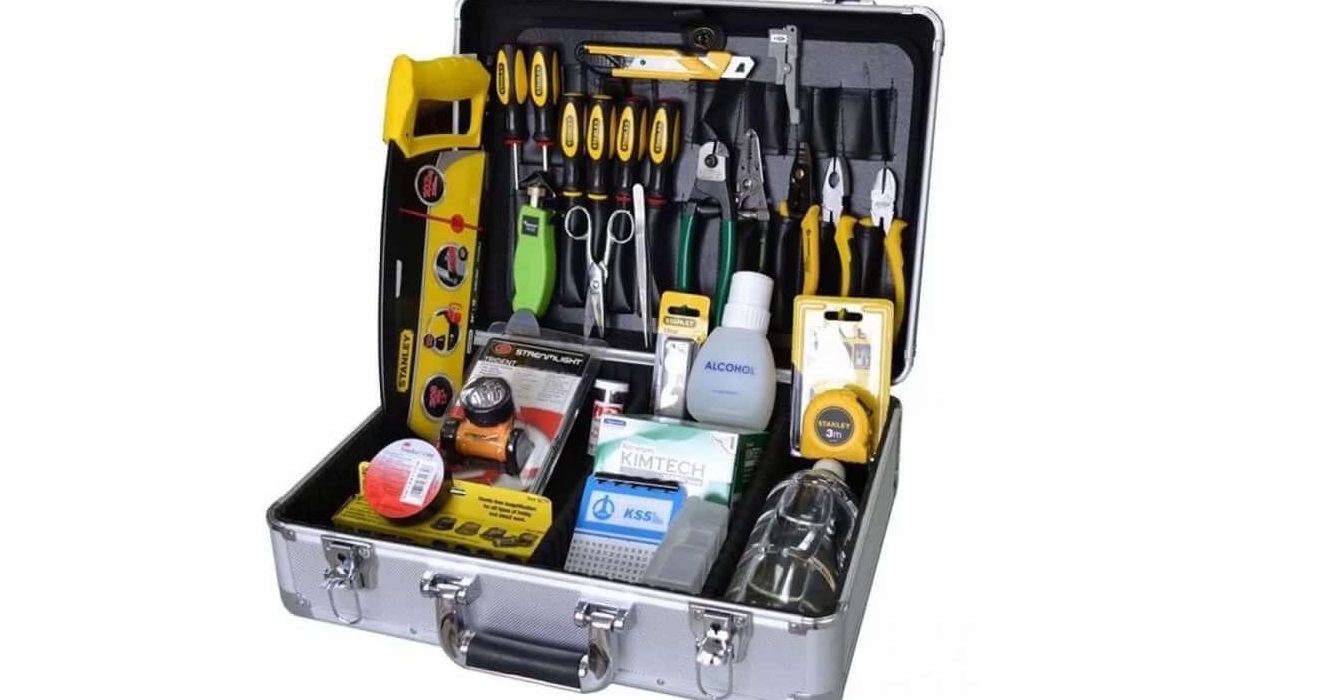
It is also recommended to prepare WD-40 lubricant. With its help, it is easier to deal with scale and rust on parts, which is necessary when dismantling the garbage filter, tank, bearings and heating elements. Don’t forget about oilcloth and rags - they should be used to cover the floor around the machine.
Using WD-40 lubricant, you can quickly remove corrosion and scale from washer parts.
Finally, we think about the “storage” of the removed parts. Large spare parts are placed near the machine in the order in which they are dismantled. Small elements, clamps, clamps, hooks are sorted into prepared containers. Another option is to put “changes” on the top panel of the washing machine.
Washing machine repair technicians advise stocking up on wire bent in an “S” shape. It hooks onto the top of the side wall and is used as a hook for the dashboard. In this case, you do not have to completely dismantle the device and disconnect the wiring connected to it. Reconnecting the board to the wires is very difficult.
Removing walls, panels and covers
Having prepared the place, the washing machine and tools, we proceed to disassembly. First of all, the external elements are removed from the Vestel: the dispenser, the door, the top cover, the front and rear panels of the case. The procedure is as follows:
- find two bolts on the eyes of the rear wall that hold the top cover;
- unscrew the found bolts;
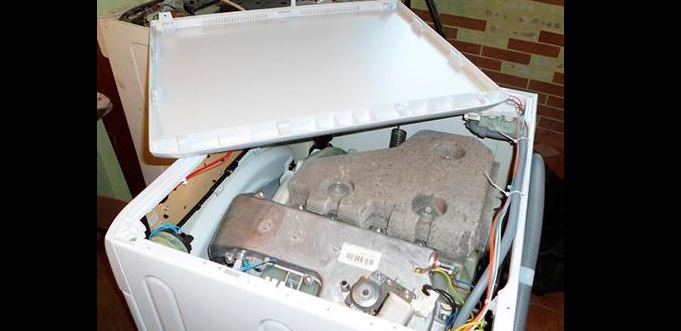
- push the cover away from you, lift it, press the latches and remove it from the body;
- pull the dispenser all the way, press the “tab” in the central part of the tray and pull it out;
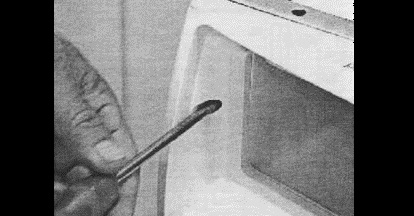 unscrew the screws “hidden” in the niche of the tray;
unscrew the screws “hidden” in the niche of the tray;- unhook the dashboard from the washing machine and, without disconnecting the wiring, hang it on the prepared hook;
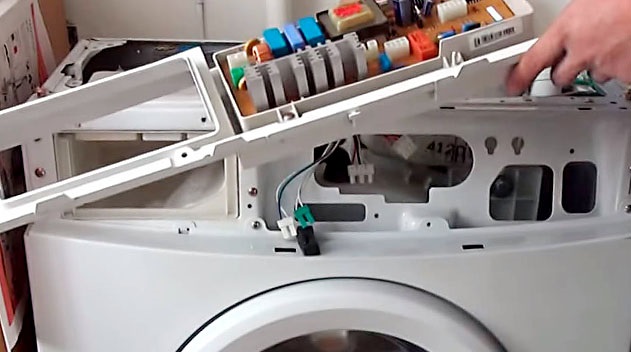
- loosen the bolts on the door hinges and unhook the hatch from the washing machine;
- find the outer clamp on the cuff, loosen and remove;
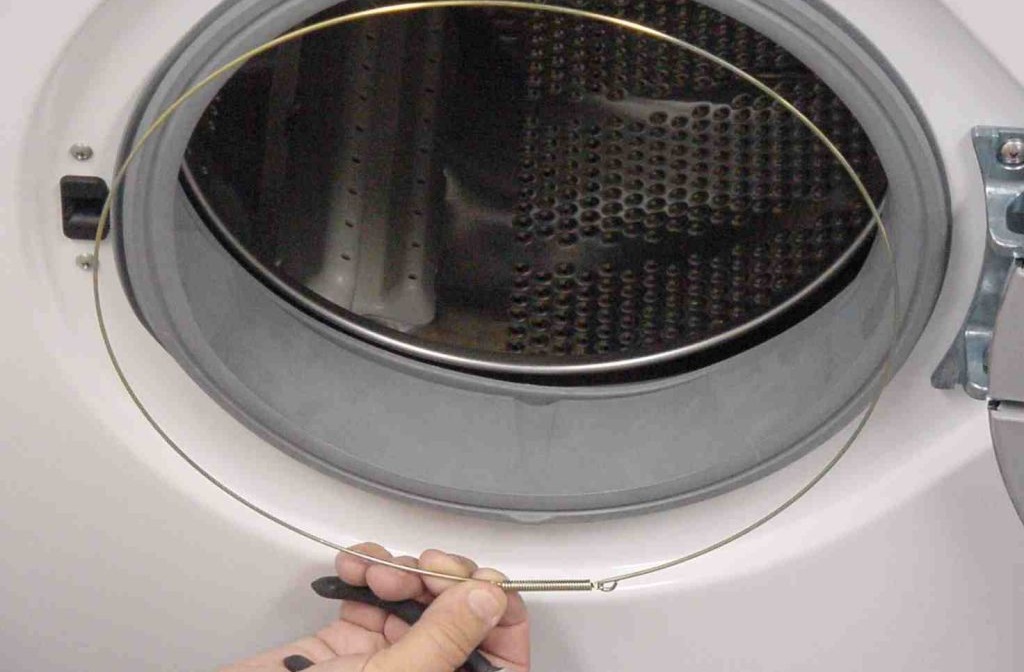
- insert the rubber band into the drum (there is no need to completely remove the seal, as it is quite difficult to pull it back on).
The second step is to disconnect the front wall from the machine. To do this, unscrew all the screws holding it: near the dashboard, next to the drain filter and near the locking mechanism. Afterwards, use a knife blade to pry up the panel, press out the plastic latches-holders and pull it towards you.The removed end is removed to the side.
Record the repair process on your camera - this will make it easier to avoid mistakes during reassembly.
Next we move to the backdrop. Here it is enough to unscrew the bolts around the perimeter of the panel and disconnect the wall from the body. The number of screws depends on the Vestel model. Most washing machines have about 4-6 of them.
Having dismantled the external elements of the washing machine, we gain access to the “insides” of the equipment. But that’s not all: for complete disassembly, you need to remove the components from the tank, divide it into two halves and remove the drum. Detailed instructions are below.
Emptying the main container
Disassembly of the Vestel continues by freeing the plastic tank. In simple words, it is necessary to disconnect all connected wires, pipes, sensors and elements from the container - more than 10 items. To avoid getting confused, it is recommended to follow a certain sequence, starting from the back wall:
- tighten the drive belt (while rotating the drum pulley);

- find the electric motor under the tank, free it from wires and clamps;
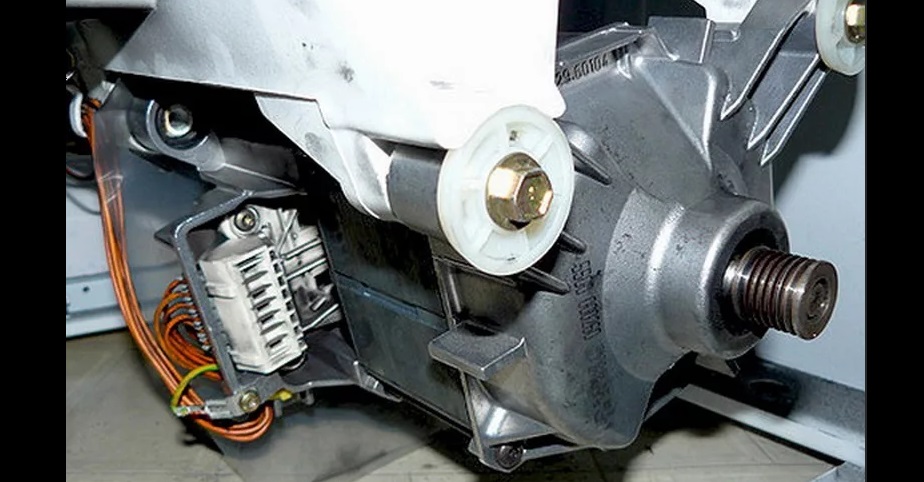
- press on the motor and, swinging it, remove it from the “socket”;
- remove the heating element (disconnect the wiring, loosen the central nut, press on the rod and remove the heater).
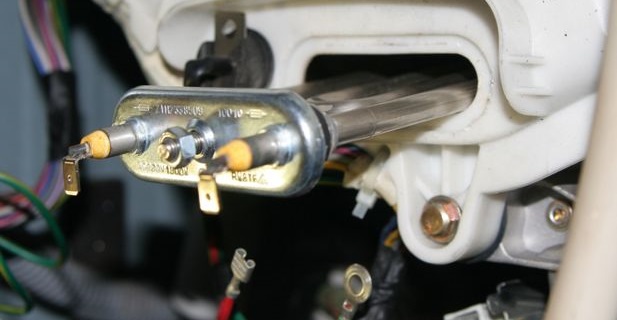
Next we move on to the “top”. We unscrew the bolts holding the counterweights and, enlisting someone’s help, take the blocks out of the body one by one. Then we find the filling valve and the water level sensor, disconnect the wiring connected to them and remove them from the machine. Then loosen the clamps on the powder receiver hoses, unhooking the pipes from the tray.
Before dismantling the tank, the adjacent wires, pipes, sensors and devices should be disconnected from it.
Then we deal with the drainage system. We proceed like this:
- we look through the bottom;
- we find the pump;
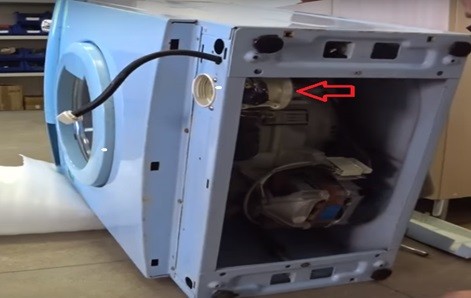
- disconnect the wires from the pump;
- loosen the bolts holding the pump;
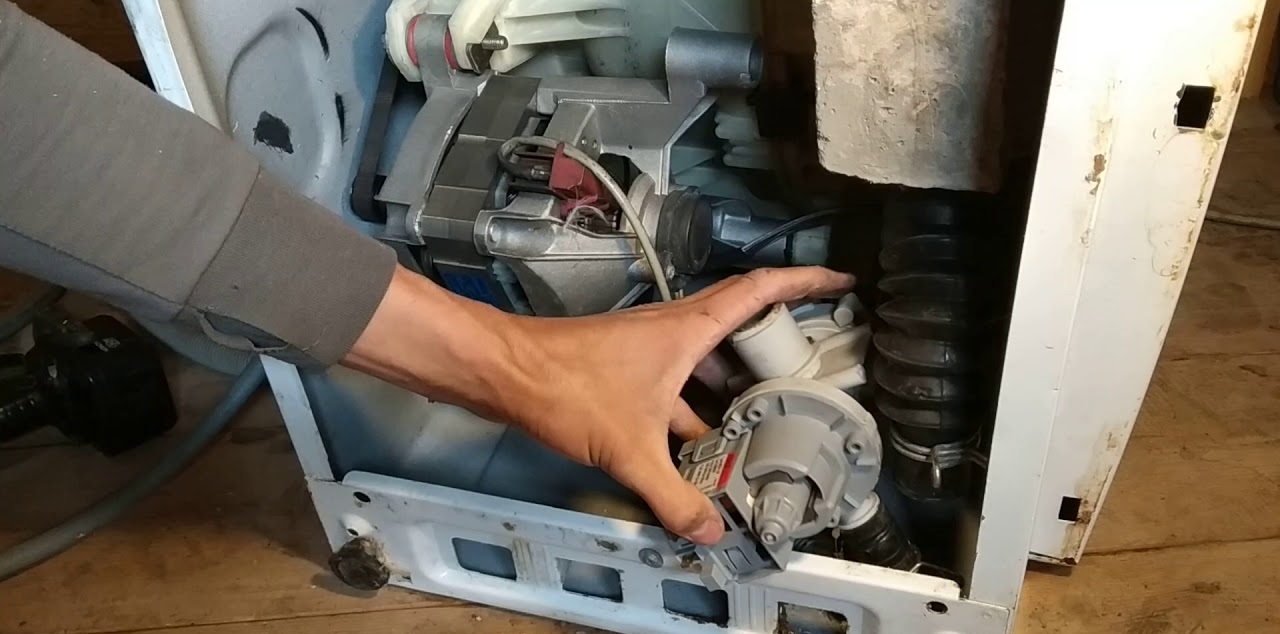
- move the pump clockwise;
- We press on the pump and, removing it from the grooves, take it out.
We leave depreciation for last. We disconnect the dampers from the washing tank and dismantle the racks. Next, we unhook the upper springs from the tank. As a result, the tank will be held only on the side hooks. All that remains is to lift the container and, removing it from the grooves, pull it out. But be careful - the tank is quite heavy. To avoid dropping it, it is better to attract an assistant.
Let's deal with the plastic container
The removed tank must be placed on a flat and dry surface - the floor or a workbench. Typically, Vestel equipment is equipped with a one-piece tank, the two halves of which are welded using a special technology. In this case, it is more difficult to halve the container: you will have to cut it with a hacksaw, and then pull it back, fix it with bolts and glue it with sealant.
Vestel washing machines are equipped with welded plastic tanks, which are sawn by hand and then glued together.
It’s easier if the tank on the Vestel is collapsible. Then you just need to unscrew the bolts along the seam and press out the plastic latches. After half are disconnected from each other.
The general procedure for dismantling the tank is as follows:
- loosen the bolt located in the center of the pulley;
- disconnect the cross from the tank (one of the blades will need to be clamped with the handle of a hammer);
- half the tank;

- leave the half on which the shaft is fixed;
- turn the tank upside down;
- use a flat screwdriver to pry up the oil seal and pull it out of the recess;

- treat the area with WD-40 to remove scale and rust;
- dismantle the bearings using a drift, puller or chisel with a hammer.
During disassembly of the Vestel, it is advisable to take time to clean the parts. You should immediately wash all contaminated areas with a soap solution - the “nest” of the drainage filter, the pump volute and the bearing shaft. The components are also cleaned separately of debris, especially the inlet and drain hoses, as well as the powder receptacle. If the layer of rust or limescale is too thick and cannot be removed, it must be treated WD-40 and leave for 15-20 minutes. Minor scale can be removed using soda, salt or a special cleaner.
Dismantling the bearing assembly is the final part of disassembling the machine. Next, diagnostics of the washing machine or the sale of removed spare parts begins. To reassemble the machine, you need to repeat all the steps in reverse order, replacing all broken parts and treating the seal and seam of the tank with sealant. At the end, you should run a test wash and evaluate the quality of the repair.
Interesting:
Reader comments
- Share your opinion - leave a comment
Categories
Washing machine repair


For buyers

For users

Dishwasher

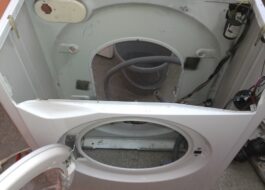


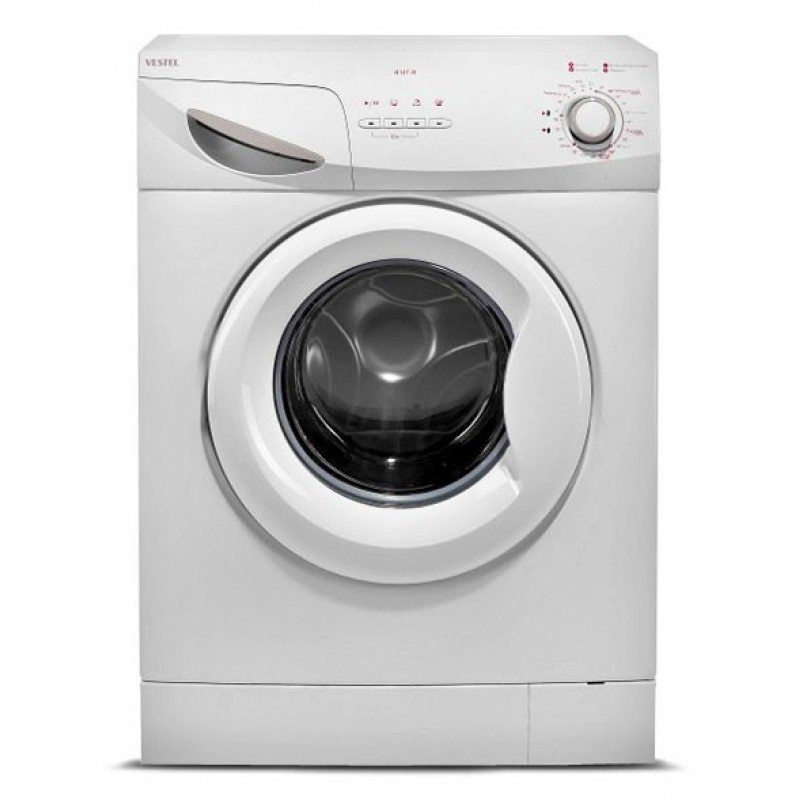
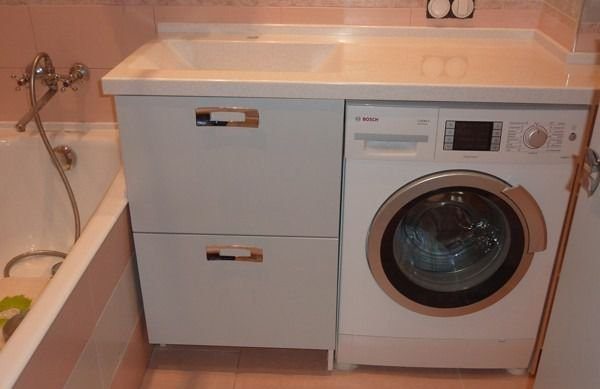











Add a comment